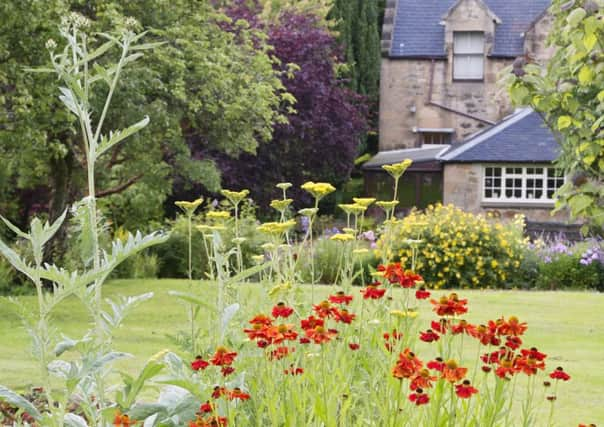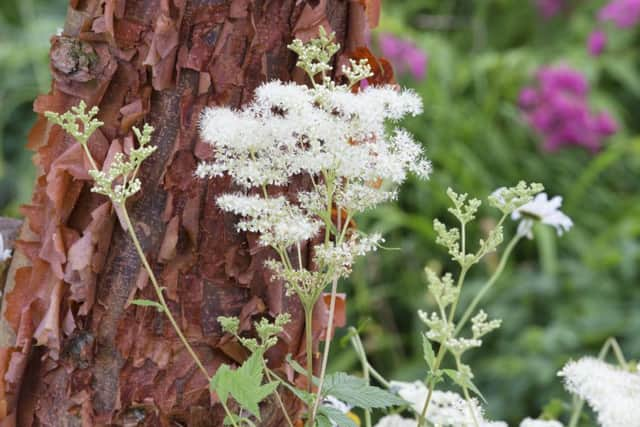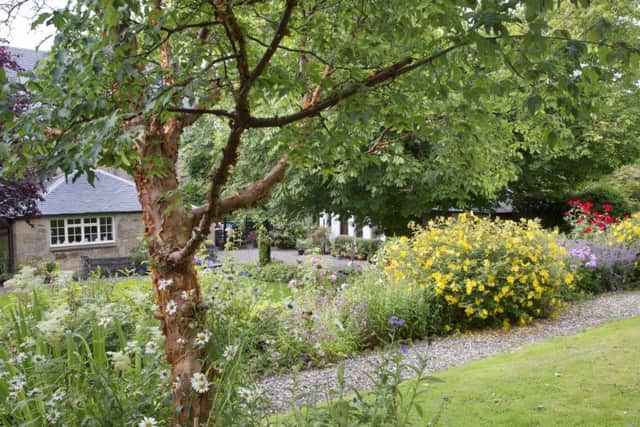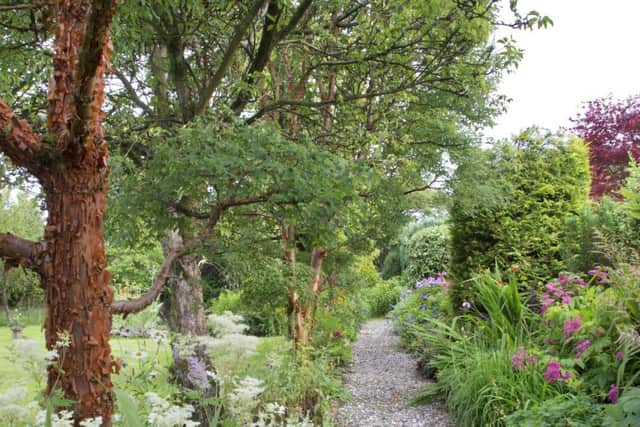A step back in time to a Victorian garden in Falkirk


THE shaded walks of the Tors do more than create seclusion from the town that lies beyond, they take the visitor to another time. You can experience the feel of the Victorian era, with no decking, no paving, but a secluded avenue and paths to a secret garden.
In early autumn, when many gardens have given their best, this one still sings with colours from rudbeckia, astilbe, phlox, heleniums, sea holly, crocosmia, asters and hydrangeas. The floral colours on show are only one half of the story, in a garden whose structure, stonework, trees and topiary create a presence throughout the year.
Advertisement
Hide AdAdvertisement
Hide AdIt’s a Victorian house built in 1877, set in an acre. With town at the front and country at the back, the award-winning garden is the work of Dr Douglas Ramsay, who came to the Tors with his wife and family 28 years ago.


“The basic things were there, such as borders and an orchard, but things were a bit sparse. What’s now the secret garden was a bit neglected.” He developed the garden keeping it close to its origins. “I try to keep the Victorian aspect of the garden,” says Douglas, who is a retired haematologist. “There is no decking or paving, the paths are just gravel, which of course makes them more difficult to keep, but I like it. No garden specialist could make it what it is today.”
The mix of formal and wilder areas reflects the Victorians’ taste for showing off the taming of nature. He has planted a lot of interesting trees – there are seven Chinese paperbark maples (Acer griseum), four along the front drive and three along an avenue at the back, two tulip trees and a dawn redwood Chinese fossil tree. A huge chestnut dominates the back of the garden – the only tree not planted by Douglas.
At the top of the garden is a wild area and beyond this a secret garden, which Douglas says is especially good in twilight. Mossy paths disappear around bends in the best tradition of a walk beckoning you into the beyond. This shady area is the perfect place to grow hostas and ferns, and to create the atmosphere of something that is aged and almost forgotten. A lion’s head fountain on a wall, and the ivy growing around stonework and sheds could have been there from the time the house was built, but Douglas added them.
“It’s quite a large area and visitors say this is the best bit of the garden,” he says.


Orchards were a mainstay of many Victorian gardens and Douglas has strengthened the collection of apple trees, plums and cherries. He doesn’t grow vegetables – “the children once turned up their noses at my greens” – but in addition to the orchard, he grows strawberries and rhubarb.
The imposing frontage of the Tors is set off by four large Chamaecyparis ‘Fletcheri’ trees, topiarised into smooth cones whose shape Douglas maintains every year. In front of them are formal beds with box balls. At the back there are three grassed areas, with a border lying between the top lawns and an avenue with the specialist trees.
Douglas adds: “The garden is shaded by a hill and large tree, and some parts of the border are shaded so I grow plants that don’t mind this, such as sea holly ‘Miss Willmott’s Ghost’ and meadowsweet.”
Advertisement
Hide AdAdvertisement
Hide AdHe has also built a good collection of rhododendrons, with 15 species and 15 hybrids.


While late summer is the best time to see it, with crocosmia ‘Lucifer’, gladioli and asters adding to the vibrant floral finale, it is also a garden that looks fabulous under snow. The topiary gives year-round structure and height in winter, while the copper of the Chinese paperback trees resonates with warmth, texture and colour. The maples also provide autumn colour. Douglas’s work gained him an award from the town for having the best garden in Falkirk. He makes stone pots for the garden with newspaper, solvent and cement. The stone ornaments add to the aged quality of the garden and give further structural focal points, and it shows how just a little modern craftsmanship can melt into its older surroundings. It’s an old garden made with present-day sensibilities and skill. In many places, the Victorians had a reputation for over-egging their creations, with no gargoyle or folly left unused. The present-day Tors is a much more subtle affair.
• The Tors, 2 Slammanan Road, Falkirk, is open by arrangement until the end of September and also for a day in summer as part of Scotland’s Gardens. For more details see www.scotlandsgardens.org